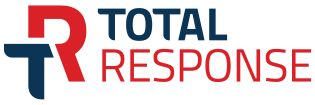Would it surprise you to learn that most employees view Quality Assurance programs as a negative process that only looks for problems and assigns fault? Does this describe your QA process? QA is a continuing process of self-evaluation and improvement. An effective QA process uses a balance of recognition and acknowledgment to encourage and reinforce good performance and training and guidance to correct poor performance.
In 1982, Edward Deming, the father of modern Quality Assurance, wrote a book titled Out of the Crisis. In his book, Deming lists several points important to the establishment of an effective Quality Assurance program:
- Create constancy of purpose toward improvement.
- Improve constantly and forever. Constantly strive to reduce variation.
- Institute training on the job. If people are inadequately trained, they will not all work the same way, and this will introduce variation.
- Break down barriers between departments. Each department serves not the management, but the other departments that use its services.
- It is not people who make most mistakes – it is the process they are working within. Harassing the workforce without improving the processes they use is counterproductive.
- Institute education and self-improvement.
- The transformation is everyone’s job.
Instituting a Quality Assurance program will provide an agency with the means to:
- Increase customer and employee confidence
- Increase an agency’s credibility
- Improve work processes and efficiency
- Enable an agency/department to compete with others
Now more than ever, our communication centers have to compete on many levels. Centers are facing consolidation. Sometimes, it is to reduce the costs associated with funding multiple centers. All too often, it is a result of government leaders being frustrated with the problems of poor performance in the center. It is easier to contract the services and turn the headaches over to someone else. Leadership is less likely to give up a center with an effective QA process in place. They are more likely to stand behind an agency that has a plan for improvement with written documentation and measurable criteria that demonstrates they are committed to upgrading call handling standards and personnel practices and procedures on a continual basis.
Often, call handlers are the only contact the public has with its government. The way they are treated by the call handler shapes their perception of the government. When tax or mill levy increases are requested, the public is much more likely to support the initiative if they feel they were treated respectfully and received good service from the call handler. A QA process will have a defined standard of care in place and will hold call handlers accountable for delivering that standard of care.
Creating an effective QA process starts with the definition of the standard of care that is to be provided. What is the level of service that you want to provide to the community and to those internal customers who rely on your services? These standards may include how customers are to be treated when they call in. How quickly will their call be processed and dispatched? Should they expect a timely and accurate response? Will they be provided services, such as EMD, consistently by a trained and knowledgeable call handler?
Once these standards are defined, they will need to be documented in writing and communicated to your staff. Before call handlers can be held accountable for their performance they must first understand what the expected standard of care is and how they are expected to meet those standards. Each standard will need to be written into a policy so that the intent of what service is to be provided is clearly defined. Written procedures will provide the steps for how the service is to be delivered.
This is a good time to ensure that the practices you are putting in place are in line with industry best practices. Best practices are defined as the most efficient and effective method of accomplishing a task, based on consistent procedures that have proven themselves over time. There is no need to reinvent the wheel. A best practice already exists for any task that you want to put in place. There are many public safety professional organizations that can be used as a resource to identify best practices.
You will notice that a recurring theme in QA is consistency. As Deming stated, the key to a Quality Assurance plan is constantly striving to reduce variation. One of the most effective ways to reduce variation and increase consistency is to incorporate a nationally-recognized call handling protocol system. The industry standard and the protocols most people are familiar with for EMS calls is Emergency Medical Dispatch, or EMD. There are also Fire Service and Law Enforcement protocol systems available. By adopting a recognized protocol system you are introducing a system built on consistency of standards into your organization. The use of the protocols alone will improve performance in your agency.
The QA process should include a random review of calls to identify call handling strengths and weaknesses. The goal of QA is consistency in meeting the standard of care. Therefore, it is as important to review routine calls as it is to review major incidents. Your staff should be providing a consistently high level of service regardless of the type or severity of the call.
The review and feedback portion of the QA process is critical to achieving performance improvement. The reviewer will evaluate how the call handler performed in accordance with the standard of care. A review form will have to be developed, which assists in evaluating whether or not the call handler met specific performance criteria and assigns a numeric score to measure the results. QA is not black and white; sometimes judgment calls will have to be made. The reviewer will have to provide specific details as to what the call handler did right and what was done wrong. Focusing on specific behavior will allow the good performer to understand what actions they did well and should repeat in the future. Conversely, providing specific behavior will make it clear to the poor performer which actions were not in line with established protocols and procedures. The reviewer must provide suggestions for improvement and set measurable goals for performance development. In most instances, the reviewer will find both good and bad behaviors that will need to be identified and addressed.
Lectures should be reserved for repetitive bad behavior where no improvement is being made or where there exists willful disregard for established procedures. Do not simply hand a review form to the call handler and expect them to draw their own conclusions. This will not lead to improved performance and may lead to a loss of credibility in the QA process in the eyes of the call handlers. To have the greatest impact, the review needs to occur as close to the call as possible.
The last portion of the QA process is the analysis and evaluation of the data produced. The QA program is meaningless without incorporating this last step. This data will indicate the level of compliance in meeting the standard of care. It can also provide valuable insight to institute change and guide improvements in the following areas:
The reports that are created through the QA process can be a valuable marketing tool for your center. Once you have the process established and you are receiving consistent results, be sure to share this information with the stakeholders in your agency. Your fire chief, sheriff, police chief, city council members, county commissioners, city manager and other leaders will appreciate receiving positive information that they can share with the community. Be creative and consider using Facebook or Twitter to announce your accomplishments.








